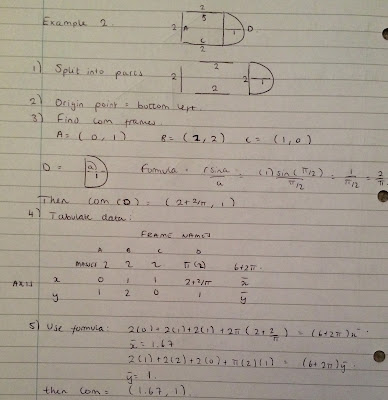A framework is an object where it can be described as 'hollow' where there is no inside to the object and that there is only 'wire' on the outskirts of the object.
Here is a simple method to finding the centre of masses:
1) Identify the object and split it into individual wires.
2) Identify your origin point for the shape and work out what way your axis will go (the coordinates of the origin must be decided depending on the type of framework).
3) Work out the centres of masses of the individual frames.
4) Set up a table including the mass of the frame, the centre of mass coordinates and totals for these.
5) Use the formula to calculate the centre of mass.
This will all be shown in examples below.
The formula mentioned above is rsin(a)/a. This is used to find the coordinate of the Centre of Mass Point of a semicircle. This can also be done with (2/3)(rsin(a)/a) which will find the Centre of Mass Point of a semicircular lamina.





